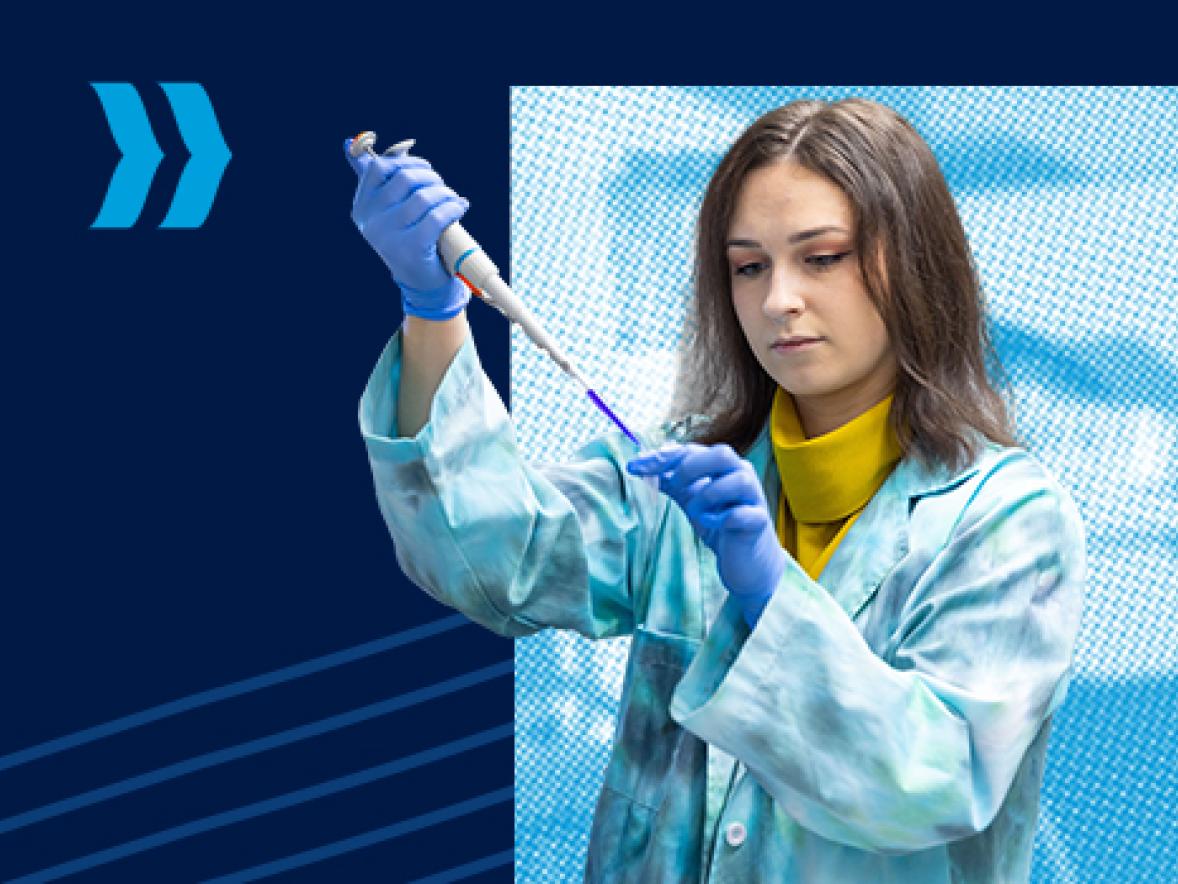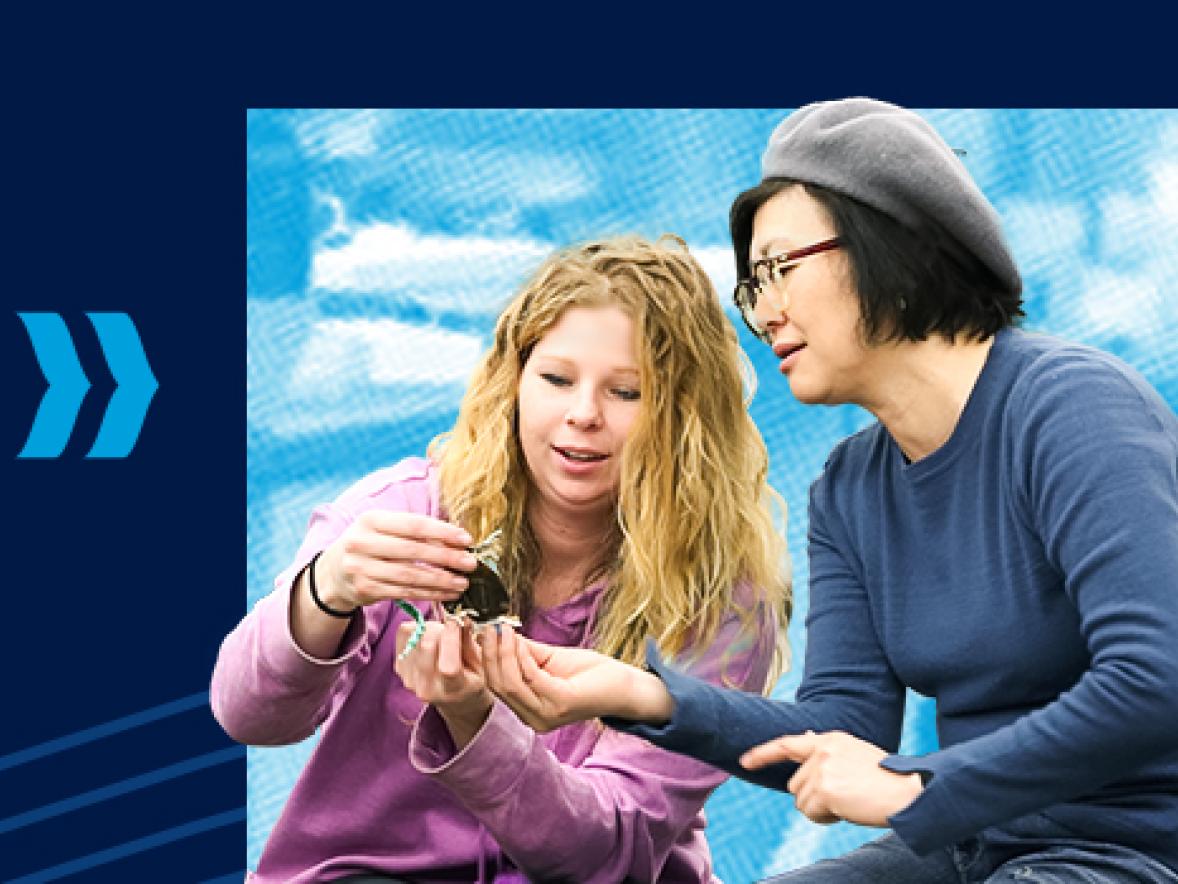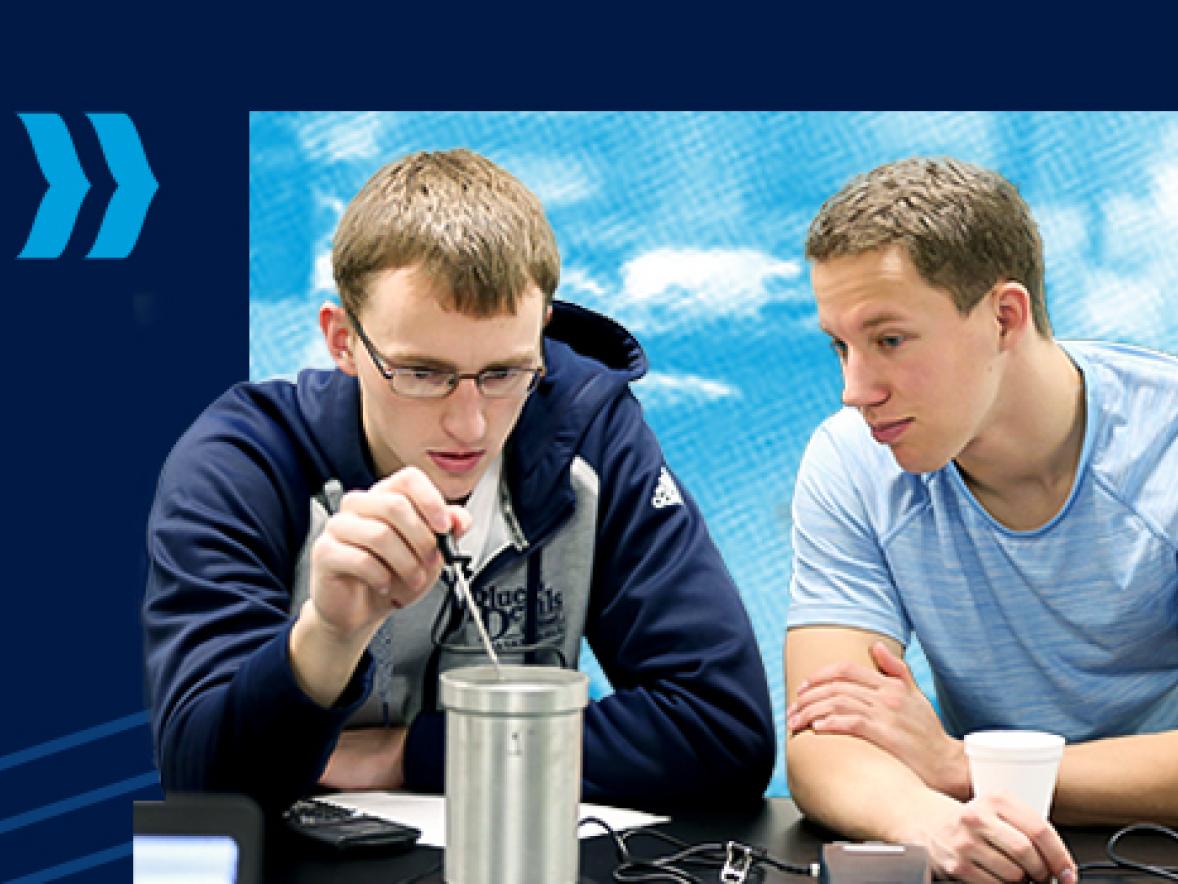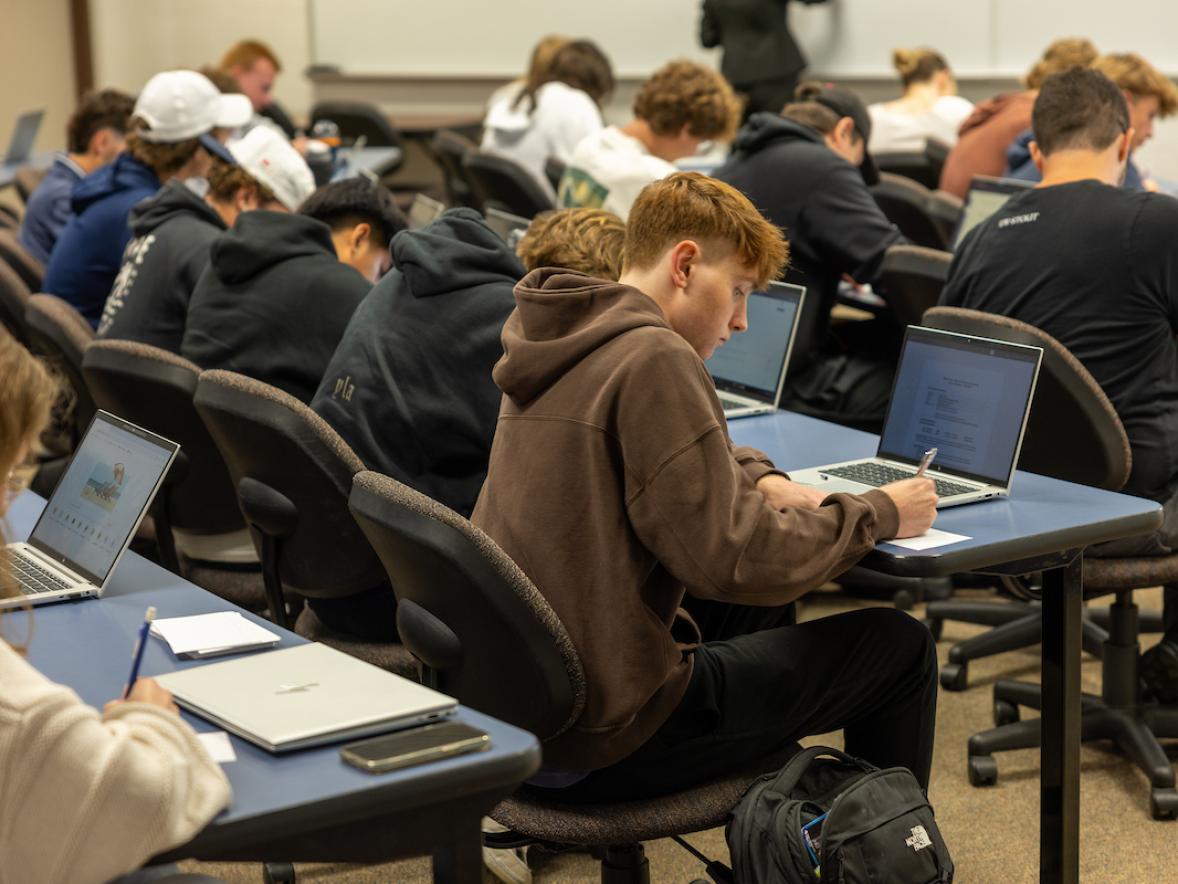Student researchers from UW-Stout and other UW campuses will showcase their research at Wisconsin’s Capitol Rotunda on Wednesday, April 2, during Research in the Rotunda.
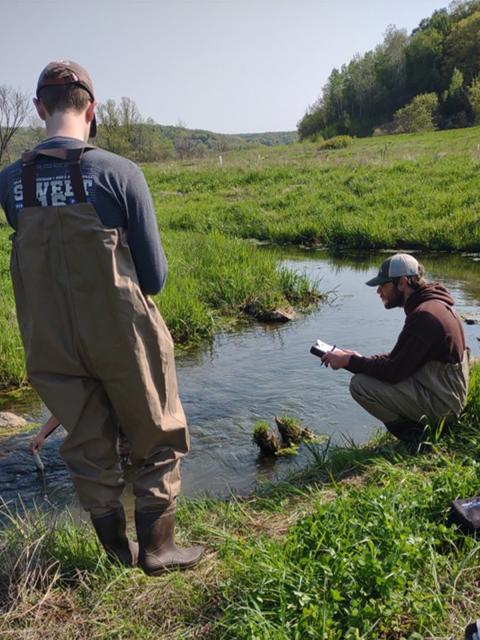
Among UW-Stout’s presenters this year are two Freshwater Collaborative of Wisconsin scholars, whose research focuses on the vital importance of native animal and plant species to the overall health of Wisconsin’s watersheds:
- Michael Buss, environmental science, of Madison: Impacts of Trout Stream Restoration on Macroinvertebrate Communities. Mentors are Nicole Hayes and Julia Chapman.
- Theodore Welch, environmental science, of Milton: Competition Between Invasive Reed Canary Grass and a Native Sedge in a Western Wisconsin Trout Stream Restoration. Mentors are Amanda Little and Keith Gilland.
Students, representing all degree fields, will discuss their research with legislators, state leaders, UW alumni and supporters from 10:30 a.m. to 2:30 p.m., with remarks at noon by UW President Jay Rothman.
“The research projects embody the personal and intellectual growth experienced by the students who created them,” Rothman said. “They are a tangible representation of the Universities of Wisconsin’s ongoing commitment to build the talent pipeline and to expand knowledge and ideas that are vital to the state’s success – objectives that are an integral part of our 2023-28 Strategic Plan.”
Now in its 21st year, more than 1,500 students have presented at the annual event, hosted by Universities of Wisconsin.
“Empowering students to present their research to legislators at the Capitol not only amplifies their voices but also bridges the gap between education and policy-making, fostering a future where informed decisions shape our society,” said UW-Stout’s Office of Research and Sponsored Programs Director Anne Hoeltke.
Impacting stream restoration in Wisconsin
Buss is an avid fisherman and is invested in the surface waters of Wisconsin. “It is intriguing for me to study the effects of restoration efforts on the surface waters I care so much about,” he said.
Buss, Welch, and other UW-Stout students and faculty members of the Red Cedar Basin Monitoring Group collected water, macroinvertebrate, and plant samples from Gilbert Creek and other streams and lakes in the area over summer 2024.
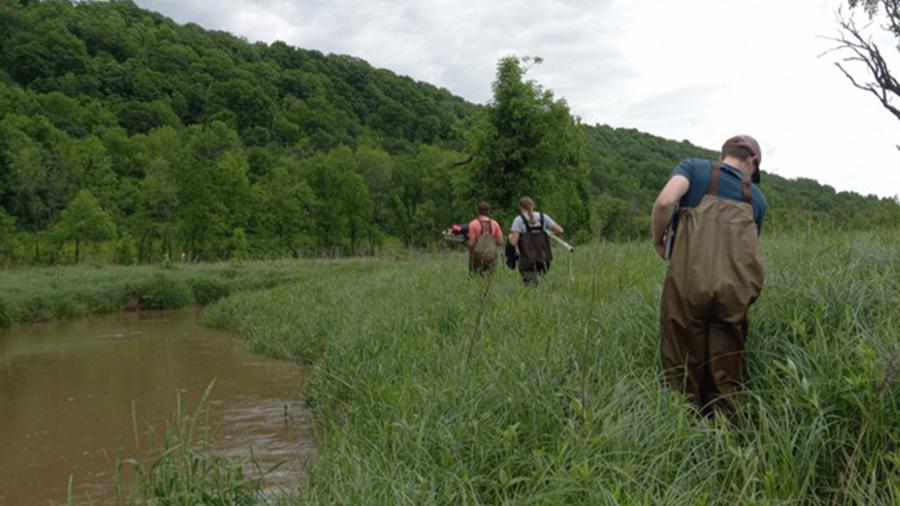
The Gilbert Creek sub watershed contains 23.8 miles of classified trout water, including Gilbert Creek Fishery and Wildlife Area, a 241-acre property approximately 7 miles west of Menomonie. Restoration of the creek began in the mid-2000s and continues in various sections.
“Our research could impact how the Wisconsin Department of Natural Resources carries out stream restorations and adds to the knowledge they have on how stream restorations impact stream ecology,” Buss said.
Macroinvertebrates are an integral part of stream systems. They are a critical food source for fish and are important in processing organic matter, he added.
A few of the most common macroinvertebrates the group found in their samplings were caddisfly larvae, mayfly larvae and scuds.
“We found that macroinvertebrate communities across stream restoration ages were more similar than we expected, but our research suggests that there may be age-related trends,” Buss said. “Newly restored sites may initially have a very different macroinvertebrate community composition that quickly shifts towards the assemblages seen in older restorations. Eventually, all restoration sites seem to settle on similar communities.”
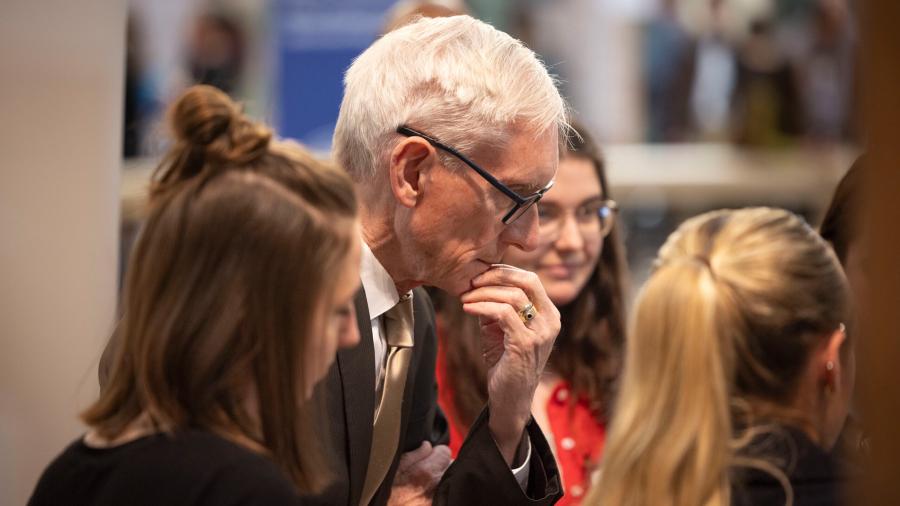
Reed canary grass is a prevalent and aggressive invasive species that is best controlled by fire and herbicide. Having a native competitor, like native sedge, could help land managers and restorations use a biological control in managing reed canary, Welch said.
Native grasses and sedges were planted to provide cover and nesting habitat for wildlife, and the plants’ root systems help to reduce bank erosion and filter out pollutants in the stream.
Samples were collected from three plots at zero, 3 and 6 meters from the bank, 50 meters apart. Reaches were defined by the year they were restored, Welch said.
“The oldest restorations had the greatest percent cover of the hairy-fruit sedge, compared to newer restorations in the Gilbert Creek. There was a trend for percent cover of hairy-fruit sedge and increasing distance from the bank,” he added. “Reed canary grass had an opposite trend. However, at zero meters, where reed canary grass had highest abundance, there was a significant negative trend with increasing percent cover of hairy-fruit sedge.”
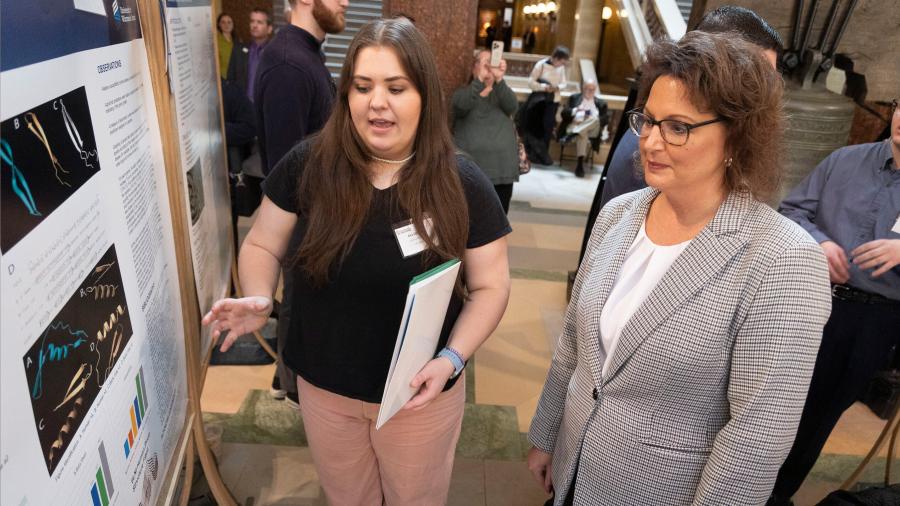
Welch likes to see these projects progress as time goes on. “More information on the outcomes of these stream restorations provides better tools on what does and doesn’t work in achieving functioning native communities,” he said.
Buss and Welch will graduate in May. Buss plans to work in water quality monitoring or a water-related field, while Welch will work for a restoration company in southern Wisconsin. They each plan to apply to graduate school.
Students across degree fields presenting
Researchers at RITR are nominated by faculty, staff and a student committee. Seven other UW-Stout students, including a third Freshwater Collaborative of Wisconsin scholar, will discuss their research with attendees:
- Corey Brisiel, applied social science, of Eau Claire: Off-Campus Housing in Menomonie, Wisconsin. Tina Lee and Courtney Juelich.
- Luke Denney, computer science, of Byron, Minnesota: Kintsugi 3D Builder: User Experience Design and Implementation. Michael Tetzlaff.
- Bryanna Hoffman, biochemistry and molecular biology, of Eau Claire: Changes in the Chemical Properties of Surface Waters in Dunn County. Ana Magdalena Vande Linde.
- Emmett Jaakkola, applied mathematics and computer science, of Apple Valley, Minnesota: Electric Circuit Simulation with Explicit Simulation of Mobile Charges. Daniel Sinkovits.
- Bria Moore, psychology, of Wisconsin Rapids: Elderly Americans: Maintaining Independence and Well-Being. Molly Welch-Deal and Sarah Wynn.
- Lindsey Redepenning, applied mathematics and computer science, FCW scholar, of Elk River, Minnesota: Precision Agriculture: Measuring Crop Per Drop Using the Internet of Things, Machine Learning, and Mathematical Modeling. Keith Wojciechowski.
- Cassie Sciarra, applied social science, of St. Paul: Social Determinants of Substance Use Disorders and Addiction Treatment: Evidence from Arbor Place Professionals. Lee and Juelich.
Crop Per Drop: UW-Stout students provide soil and water R&D for Chippewa Valley Bean
Continue ReadingUW-Stout leadership attending are Chancellor Katherine Frank, Provost Glendalí Rodríguez and Head of Staff Kristi Krimpelbein.
In addition, 12 UW-Stout students will present at the National Conference on Undergraduate Research from Monday, April 7, to Wednesday, April 9, in Pittsburgh, Pennsylvania. More than 4,000 undergraduates from all disciplines from across the country will attend.
